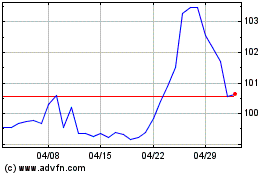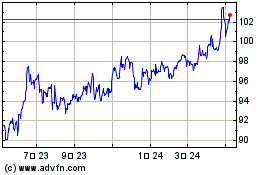Australian Dollar Declines On Weak Retail Sales, Virus Worries
2021年1月22日 - 12:03PM
RTTF2
The Australian dollar fell against its major rivals in the Asian
session on Friday, as the nation's retail sales dropped more than
forecast in December and a resurgence in coronavirus infections in
China dented the risk sentiment.
Data from the Australian Bureau of Statistics showed that
Australia's retail sales tumbled a seasonally adjusted 4.2 percent
on month in December - coming in at A$30.324 billion.
That missed expectations for a decline of 2.5 percent following
the 7.1 percent jump in November.
China has reimposed travel restrictions in Beijing and other
cities after a rise in new infections.
Authorities are planning to impose strict coronavirus testing
during the Lunar New Year holiday next month.
Deaths from Covid-19 hit a new record for the second time this
week in Indonesia on Thursday, while case numbers are increasing in
Malaysia, Thailand and the Philippines.
The aussie dropped to 2-day lows of 0.7728 against the greenback
and 80.12 against the yen, from its early highs of 0.7770 and
80.45, respectively. The aussie is seen locating support around
0.75 against the greenback and 78.00 against the yen.
Reversing from its early 2-day high of 0.9823 against the
loonie, the aussie edged down to 0.9800. The aussie may face
support around the 0.96 level, if it falls again.
The aussie fell to a 2-day low of 1.5733 against the euro, after
rising to 1.5653 in early deals. On the downside, 1.62 is likely
seen as its next support level.
The aussie held steady against the kiwi, after having dropped to
1.0750 at 5:00 pm ET.
Looking ahead, PMI reports from major European economies are due
in the European session.
Canada retail sales for November and U.S. existing home sales
for December are set for release in the New York session.
AUD vs Yen (FX:AUDJPY)
FXチャート
から 3 2024 まで 4 2024

AUD vs Yen (FX:AUDJPY)
FXチャート
から 4 2023 まで 4 2024
